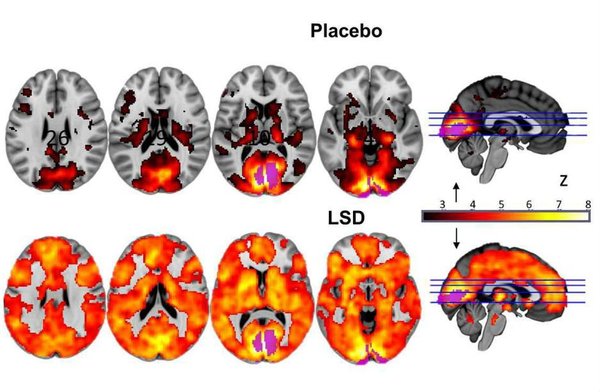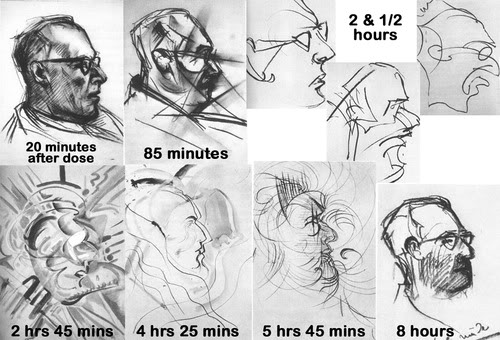Blog 7: Neuroscience + Art
The human brain is debatably one of the most sophisticated and
advanced organic systems in existence. It allows human beings to perceive the
world through physical senses, to feel emotions, to solve problems, and to
create civilization & culture. In the context of creation, the human brain
has always had an interesting relationship with the creation of art, in the
sense that the brain both sculpts and is sculpted by art. From this week’s
lectures by Dr.Vesna and the readings, I was able to further explore the
insight neuroscience has developed for art, as well as the impact art has on
this study of the mind.
 |
| An artistic representation of the brain as a neural network |
Whether it’s conveyed through visuals, sound, or the sense
of touch, art is used as a form of expression by the artist in an attempt to
project their thoughts and emotions to the audience. However, in order to
create artwork that can retain its intended appeal, the artist must understand
how the mind of his/her audience functions, and how they perceive the entire
experience. In the past, this was achieved purely through intuition, empathy,
and being well versed in social contexts, but with the modern studies of
neuroaesthetics, generalized correlations have been made in regards to what the
human brain interprets as aesthetically pleasing, amongst other various
emotions. This ability to really understand the brain’s response to aesthetic
stimuli has been a major breakthrough in neuroscience development, and is a
powerful tool used in artistic endeavors as much as it is in the medical field.
 |
| The human brain activity being monitored with and without LSD under different stumuli |
An interesting avenue to observe the relationship between
brain and art can be seen in the culture of artists who partake in recreational
lysergic acid diethylamide (LSD), or more colloquially known as “acid”. From
famous song writers such as John Lennon from the Beatles, to legendary
novelists like Aldous Huxley, many creative genii have had their most profound
masterpieces sprout through the influences of LSD. This psychedelic drug has
been known to give an individual “trippy” visuals, along with a sense of
altered state of consciousness and “ego-dissolution,” which many people have
framed the experience as some form of spiritual transcendence. With modern
studies on the effects of LSD, scientists have been able to analyze how the brain
responds to the drug, and in result how it changes our perception of sensory
stimuli and our method of expression. Being able to draw this connection
between the brain’s activity and artistic creativity, artists can continue to
delve deeper into new forms of displaying their work as well as being able to
create a bigger impact to their audience.
 |
| An artist's interpretation of the same subject at different points of his acid trip |
References
·
Griffiths, James. "This is your brain on
LSD, literally." CNN. Cable News Network, 13 Apr. 2016. Web. 21 May 2017.
·
In Art | October 15th, 2013 17 Comments.
"Artist Draws Nine Portraits on LSD During 1950s Research
Experiment." Open Culture. N.p., 15 Oct. 2013. Web. 21 May 2017.
·
Turk, Victoria. "How to Pick Music for
People on LSD, From a Scientist Whose Job That Is." Motherboard. N.p., 3
May 2016. Web. 21 May 2017.
·
Jung, Carl G. "The Spiritual Problem of
Modern Man." Modern Man in Search of a Soul 10 (1955): n. pag. Web. 21 May
2017.
·
Sherman, Carl. "The Senses — A
Primer." BrainFacts.org. N.p., 11 Sept. 2013. Web. 21 May 2017.
·
Frazzetto, Giovanni, and Suzanne Anker.
"Neuroculture." Nature Reviews Neuroscience 10.11 (2009): 815-21.
Web. 21 May 2017.

Comments
Post a Comment